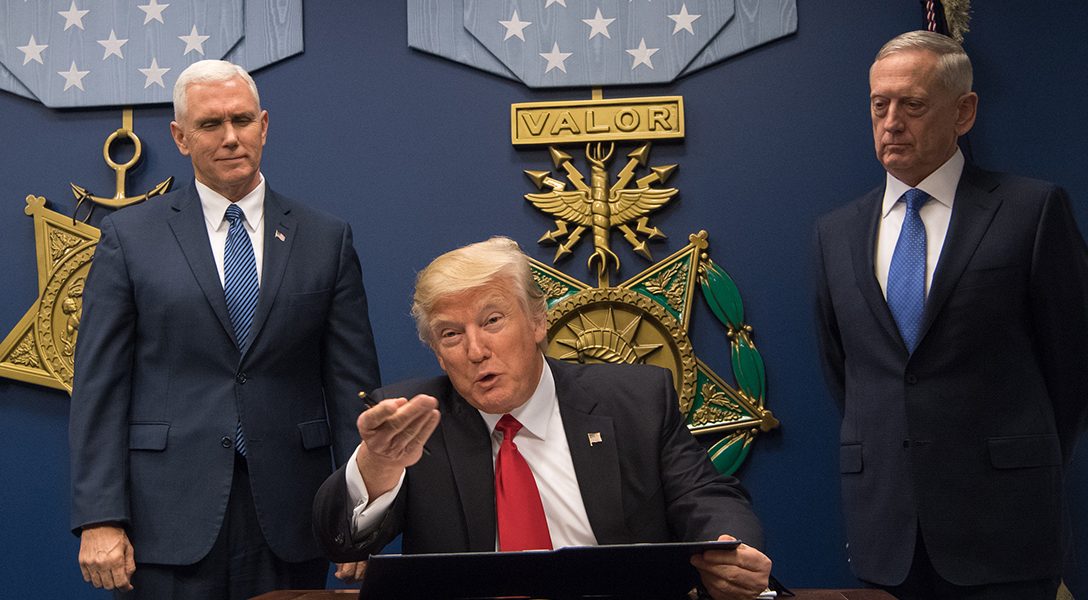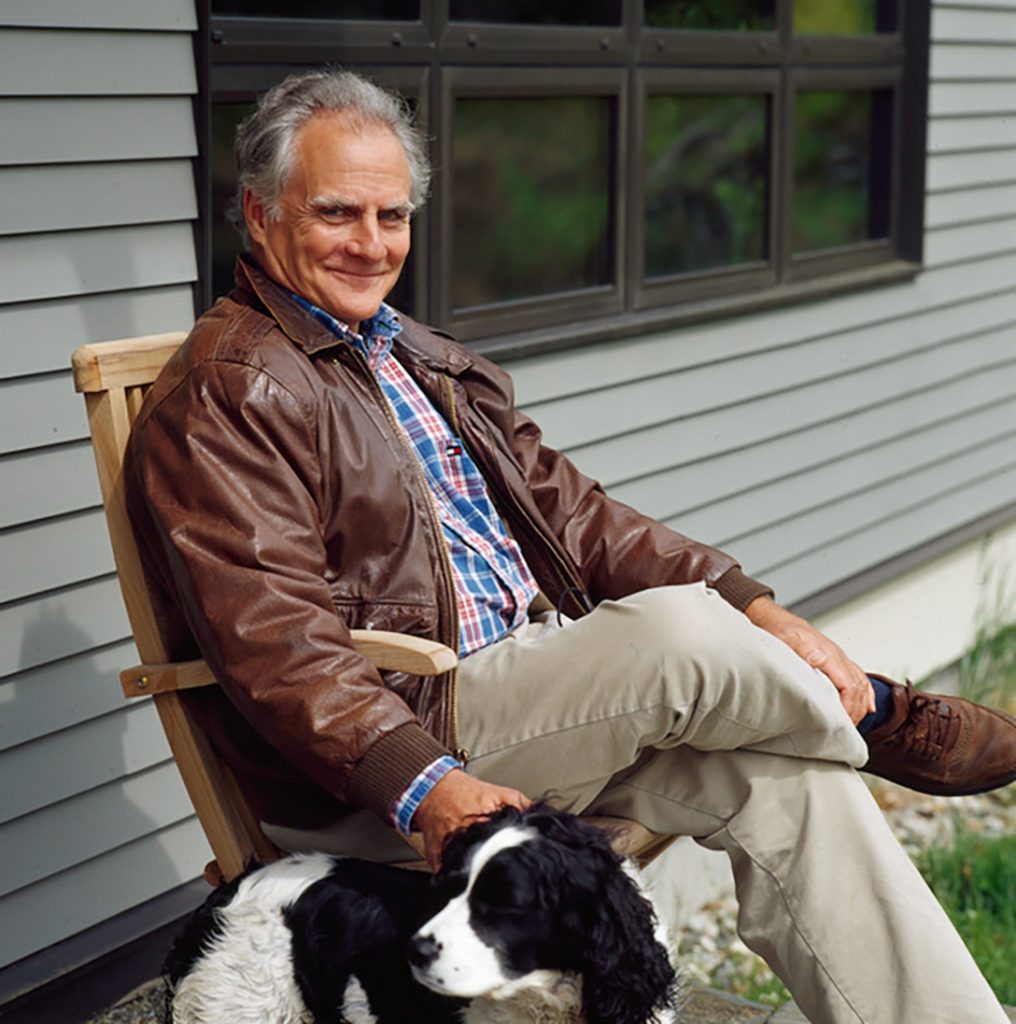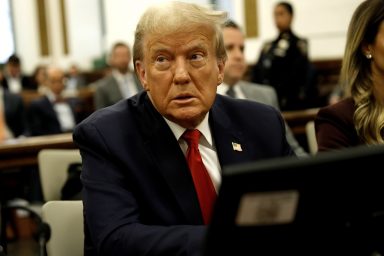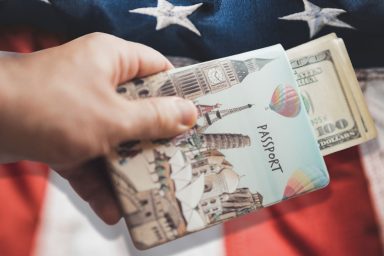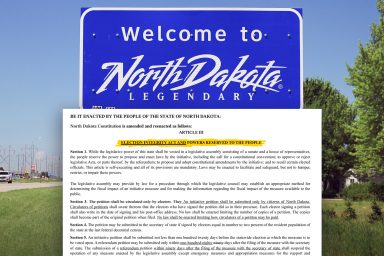A journalist who has witnessed a lot — the 1968 police riots during the Chicago convention, Los Angeles following the Charles Manson murders, the implosion of the US Army at the end of the Vietnam War — has never seen anything as depressing as the election of Donald J. Trump.
Jonathan Z. Larsen has seen a lot.
He covered the 1968 police riots during the Chicago convention, the Charles Manson murders in LA, the implosion of the US Army at the end of the Vietnam War, and the slow decline of media beginning in the 1980s.
But he has never seen anything as depressing as the election of Donald J. Trump.
Below, in an excerpt from his forthcoming memoirs, he describes how it happened, and how the celebration of schlock and the tolerance of corporate corruption have brought American democracy to a defining moment.
(Larsen was Time magazine’s Saigon bureau chief; he has been an editor for The Village Voice and New Times; a contributor to New York, Manhattan, Inc., New England Monthly, and the Columbia Journalism Review. He is a Nieman Fellow, Harvard University, a Clarion Awardee, Chairman of the Board at Sterling College, and was a 30-year Board member of Cambridge College. He is also on the Board of WhoWhatWhy.)
Introduction by WhoWhatWhy team.
***
“There never was a democracy, yet, that did not commit suicide.” — John Adams
From the beginning, the presidential campaign of 2016 had given me agita. I feared it was a convergence of ominous trends that had been developing for decades: the decline of mainstream media outlets; the corrosive effects of a celebrity culture on the American consciousness; and the growing resentments over an income inequality gap that seemed wider by the day. One watched in disbelief as the media, which had created the tabloid phenomenon Donald J. Trump over a matter of decades, now, alternately fawning and cowering, showcased Candidate Trump to the exclusion of all other candidates. It was a priceless gift of “air time” that he rode to the White House, all the while playing to the very voter resentment that billionaires like himself had done so much to create.
The media and this celebrity culture went hand in hand. The latter could not exist without the former; and the former could not enrich itself without the latter. It was an odious symbiotic relationship.
In 2001 I had spent the summer researching the last forty years of journalism for an anniversary issue of the Columbia Journalism Review. I handed my essay in on 9/11. I had concluded that the glory years of print journalism were more or less over as early as the 1980s. Meanwhile, the culture of the celebrity, which I had first experienced — and been repelled by — as a Time reporter covering Hollywood in the late 60s, had metastasized into something akin to a psychotic break from the real world. Too many people were now heavily invested in these tabloid fantasies. The increasing addiction to mind-numbing talk shows, game shows and “reality” shows, along with countless publications that followed People down the celebrity rabbit hole, had produced a culture mesmerized by people who were minor personalities at best. These were the opposite of heroes or role models. They were of interest precisely because of their bent narratives: their drug addictions, their divorces, their custody battles, their cratered careers and miraculous resurrections. The media and this celebrity culture went hand in hand. The latter could not exist without the former; and the former could not enrich itself without the latter. It was an odious symbiotic relationship.
In the words of Pulitzer Prize-winning historian Daniel Boorstin, our nation was now awash in “human pseudo-events” (his term for celebrities), pseudo stories, staged news events. The primary and presidential debates of 2016 were but a recent example. Where were the questions about Iraq and Afghanistan? Did anyone on the stage or in the audience know or care about the disastrous consequences of those wars? Did anyone have a plan to save Iraq from becoming another failed nation? Where were the questions about the battle of Mosul, which had started a few days before the final debate? What were the plans to fight ISIS? What would happen to payments on the national debt now that interest rates had begun to rise?
There was a belief at the end of World War II that capitalism was not only the world’s most successful economic model but one that just might be self-correcting. One reason it had worked so well, Americans came to believe, was that they were honest in their dealings, and that corruption was something that happened in third-world countries. In the course of researching the family archives for a memoir, I came upon a speech my father, then the President of Time Inc., had given in New York in 1951, which had been printed up into an elegant pamphlet, 14 pages long, entitled “The New Free Enterprisers.” It was a veritable manifesto calling out the abuses of the Robber Baron era and predicting a future of enlightened morality and ethics in business going forward.
The speech began with a long description of an advertisement that had run in Fortune magazine headlined “The Tycoon is Dead.” The notion was that the bad old days of capitalism, a time of raw materials and rugged individualism, when the “tycoon” operated with few rules, was over. Father proclaimed a new order of “professional responsibility” in which corporate executives like himself would be measured more by what they did than by what they owned. As for the outsized industrialists with their flamboyance and notoriety, they were consigned to the dustbin of history. “The business celebrity has all but disappeared,” he pronounced.
The journalist Michael Kinsley has famously said, “The scandal isn’t what’s illegal, the scandal is what’s legal.” In my view, the scandal is what goes on in the executive suites and boardrooms of the nation.
His speech went on in Utopian furor: “The Tycoon’s mansions are being abandoned or torn down. The liveried servants have gone into the catering business, and the last of the great yachts, having finished their wartime service as auxiliary naval vessels, lie in scattered harbors like ghosts of our past.”
Reading his speech, 65 years later, I realized how very personal and heartfelt it was. Father believed fervently in fair employment practices and wages, and used to tell us of his own private dream — a time when the people who had the most interesting and intellectually rewarding jobs, such as judges, would be paid no more than those who performed equally essential but far less stimulating work, such as plumbers. At one point he even suggested to us that we become plumbers, and I doubt that he was kidding.
But his Utopian world never came to be. Instead, along came the Gordon Gekkos, and yes, the Donald Trumps of the world, scheming, pilfering, litigating their way to the top as they trampled hundreds and thousands of hard-working people below them. The country’s capitalist model almost imperceptibly devolved into the very “kleptocracy” we accuse countries like Russia of being.
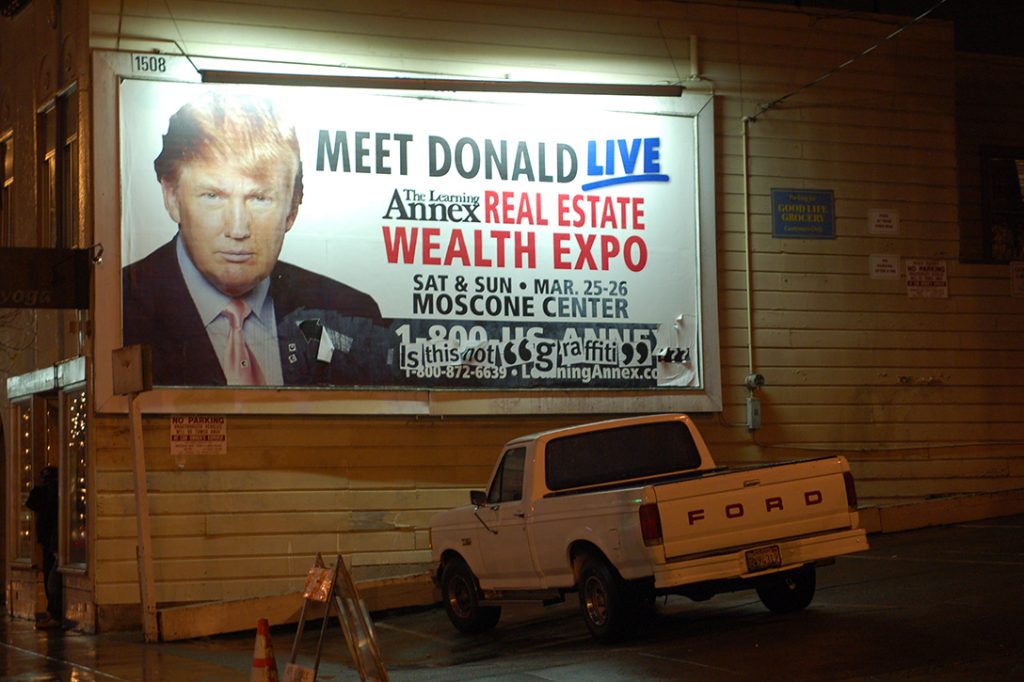
Photo credit: Steve Rhodes / Flickr (CC BY-NC-SA 2.0)
I had always been fascinated by the subject of white-collar crime. I detested the fact that the already wealthy and well positioned would cheat their employees, their customers, their shareholders to gain even more advantage. In 1975 I ordered up a cover story in New Times on the new “Boardroom Bandits.” The photo spread leading off the story showed myself and six other New Times staffers sitting around a table in suits with stockings over our heads. We ran a rogues gallery of those who had been sentenced to prison — those were the days — and tried to address the prickly issue of how to rein in future corruption. Harvard Law School’s Alan Dershowitz framed the basic problem: “We are really stuck between two models of irrationality. On the one hand it makes no sense at all to imprison white-collar criminals because they don’t need walls around them. On the other hand it is unthinkable to let them go free and simply subject them to fines as a license fee for criminality. Fines are not a stigmatizing event in our society.” The year we ran our story the annual estimated price tag to the nation of such crime was $180 billion in current dollars. Today the estimates range as high as $600 billion.
The journalist Michael Kinsley has famously said, “The scandal isn’t what’s illegal, the scandal is what’s legal.” In my view, the scandal is what goes on in the executive suites and boardrooms of the nation. The divide between executive pay and the salaries those executives pay to their employees has grown to the point where it has become obscene. The George W. Bush tax cuts on the rich simply made the problem worse, as will the tax cuts to come from President Trump. Reforms through the years designed to fix the problem, such as rewarding top executives through stock options pegged to performance, failed miserably. Executives and their lawyers gamed their contracts to the point where, however badly their companies performed, their compensation “packages” continued to increase inexorably and exponentially. Indeed, there was now an incentive to grow profits by whatever means, and so by suppressing salaries and cutting benefits, these executives further enriched themselves while impoverishing their workers. When they want a truly stupendous payday, they simply sell their company and its employees to the highest bidder, pocketing the enormous bonus payment that is sure to be part of the deal.
Trump’s campaign had been a fraud since day one. His political odyssey had begun, after all, with the bogus “birther movement,” a monumental lie in which he challenged President Obama’s citizenship and his very legitimacy to be president.
OxFam estimated in 2015 that 62 of the richest people in the world had as much wealth as the 3.6 billion people in the bottom half of the world’s economy. A year later, those fortunes had grown so much that, shortly after the election, Oxfam announced that it now took only the eight richest people (six of them American) in the world to equal the bottom half.
White collar crime is one of the drivers of this divide, because it defrauds consumers, taxpayers and pensioners while enriching the privileged class. The effect of such crime is drawing closer to us every day, like enemy mortar rounds being “walked in” toward their targets. The name Ponzi was once something found in history books, or perhaps in a crossword puzzle. By the ’90s Ponzi schemes were everywhere. At the time I lived in North Salem, New York, where the most respected man about town was a fellow named Paul Greenwood. I would regularly sit next to him at board meetings for the local library, where he served as chairman. Greenwood, we would eventually learn, had all the while been running a $900 million Ponzi scheme on the life savings of lesser mortals. Many of them were wiped out completely. Meanwhile, in Minneapolis, at least three of my relatives had been victimized by a $3.65 billion Ponzi scheme run by one of that city’s more prominent businessmen, Tom Petters. They had been led into the fraud by one of my nephew’s best friends.
In Vermont’s Northeast Kingdom, where I chaired the board of a small liberal arts college, residents were recently shocked to learn that a much-ballyhooed development at two nearby ski resorts, Jay Peak and Burke Mountain, turned out to be a $200 million Ponzi scheme. At the heart of the scheme was an immigration visa policy called EB-5, under which foreign citizens who invested at least $500,000 in a US business would have a quick path to citizenship. The unsuspecting victims were all foreigners, including citizens of Saigon, now called Ho Chi Minh City, who had hoped to buy their way into the United States.
This new wave of white collar crime eventually washed up onto the farm in Fairfield, Connecticut, where I had grown up. I had had a small hand in the design of a new house my parents decided to build on one corner of the property, which they moved into in 1957. When my father died over 20 years later, his will left the house to the Connecticut Audubon Society to sell for profit — my parents having already given the Audubon the surrounding property for a bird sanctuary.
I never learned the name of the couple who purchased our home until Madoff’s Ponzi scheme was exposed. It turned out that no one had benefited more from the fraud — not even Madoff — than Jeffry and Barbara Picower, the couple who now lived in our house at 4900 Congress Street. Shortly after their role in the scheme came to light, Jeffry was found dead of a heart attack in the pool of their Florida home. Months later, Federal investigators came calling on Barbara, his widow. I have no evidence that negotiations took place in Fairfield, Connecticut, but I like to imagine them all sitting around gazing out at the duck pond where I used to float cardboard boats. Barbara Picower insisted to investigators that she knew nothing of Madoff’s fraud or of her husband’s involvement, but in the end agreed to turn over $7.2 billion dollars. Yes, you read that right. We’re talking Billions. It was the largest single forfeiture recovery in US history.
It was this upside down moral universe that made it possible for Donald Trump to reach the White House. How else could a dodgy corporate executive, a man whose real estate business brought him into contact with mobsters in both the construction business and the gaming industry, be nominated by his party, let alone elected, even if it was by only 45% of the electorate? Donald Trump, best known to the public as the host of a fatuous TV “reality” show, was precisely the sort of “human pseudo-event” that Boorstin warned us about. His was a self-made fable of power, success and sexual escapade that had mesmerized tabloid journalists, and the public, for decades.
In the frenetic blur of campaign coverage, this essential fact got lost amidst the bluster: Trump’s campaign had been a fraud since day one. His political odyssey had begun, after all, with the bogus “birther movement,” a monumental lie in which he challenged President Obama’s citizenship and his very legitimacy to be president. Four years later the fraud continued when Trump announced his presidential candidacy. There were throngs of enthusiastic supporters in the Trump Tower auditorium that day, cheering each and every trope of what would become Trump’s stump speech: illegal Mexican immigrants are rapists, Muslims should be banned, the media is corrupt. The resulting TV coverage gave the impression of a spontaneous outpouring of support, with an attractive horde of supporters shouting and waving placards.
Most of the Donald J. Trump Foundation’s money had not come from Trump, as the name strongly implied, but from suckers who thought they were giving to a legitimate enterprise engaged in good works. As for the six-foot Trump portrait, that was the small one; there was another portrait of Trump purchased with $20,000 in foundation funds that stood 20 feet tall.
No one questioned it at the time. But the scene struck David Cay Johnston, a Pulitzer Prize-winning business reporter present for the occasion, as bizarre. Midtown Manhattan is “not exactly known for xenophobia or applause for racist tirades,” he recalled thinking to himself. Johnston, whose book The Making of Donald Trump would be published the following summer, looked into the matter and discovered that all those cheering supporters were in fact Hollywood-type extras, the sort you rent by the busload for crowd scenes. They were paid $50 each.
The campaign ended in a far more serious fraud. Let’s call it what it really was: white-collar crime. Throughout 2016 “Trump University” had been under investigation. I put the name in quotes because it was not in any sense a university and in fact was not even accredited to teach. In spite of all the promises of Trump’s hands-on involvement, he had almost nothing to do with the enterprise other than pocketing the money that flowed in from the scam’s victims. Just days after the election — how convenient — the Trump organization was fined $25 million for what was called a “fraud from beginning to end.” The money was, in Dershowitz’s phrase, “a license fee for criminality.” But no one cared. As Dershowitz also said, “Fines are not a stigmatizing event in our society.”
That was hardly the only revelation about Trump’s business dealings. The Washington Post’s David A. Fahrenthold discovered, after months of digging, that the Donald J. Trump Foundation turned out to be more of a fraud than the much maligned Clinton Foundation. Trump had brazenly used his organization to pay bills, settle claims on behalf of his for-profit business, and make political contributions. Such self-dealing is illegal under governing rules. “You want to debate foundations and charities?” Obama said during the campaign. “One candidate’s family foundation has saved countless lives around the world. The other candidate’s foundation took money other people gave to his charity and then bought a six-foot-tall painting of himself.” Obama was correct. Most of the Donald J. Trump Foundation’s money had not come from Trump, as the name strongly implied, but from suckers who thought they were giving to a legitimate enterprise engaged in good works. As for the six-foot Trump portrait, that was the small one; there was another portrait of Trump purchased with $20,000 in foundation funds that stood 20 feet tall. This too did not seem to matter.
Locally Trump was known for stiffing construction workers and contractors, browbeating partners, real estate agents, local politicians and journalists, all the while sowing lawsuits as broadly as handfuls of alfalfa seeds.
What transpired during the 17 months between Trump’s announcement in front of Hollywood extras and his election will no doubt be the subject of much introspection among the media over the coming years. Cable television simply could not turn its Cyclopean eye away from this trained entertainer with his high recognition factor, his orange hair and his clownish behavior. A new insult or outrage from Trump captured each day’s news cycle and held TV viewers in thrall, to the detriment of all other candidates. It was the fascination of the abomination. By the time the revivified Washington Post and The New York Times rose to the challenge, their worthy investigations were more or less lost in a tidal wave of populist fervor.
Still, the failure of the media to even slow Trump early on was mystifying. There were so many flashing red lights along the way: the fraudulent birther movement; the mind-boggling insults; the refusal to turn over his tax returns; the call to supporters to attack protestors; the Access Hollywood tape; the warnings of a legion of leading Republicans and commentators on the right.
Those of us who lived in New York had been reading — in my case, publishing — stories about his moral and ethical turpitude going back decades. Locally Trump was known for stiffing construction workers and contractors, browbeating partners, real estate agents, local politicians and journalists, all the while sowing lawsuits as broadly as handfuls of alfalfa seeds.
Back when I was editing the Voice, we published excerpts of Wayne Barrett’s book, Trump: The Deals and the Downfall. The Voice’s legendary city reporter, who died a day before the President was sworn in, Barrett had been covering Trump since 1979. His book detailed the ruthlessness and self-mythologizing of the future president, exposing among other lies Trump’s claim that he was a self-made man. He was not only born with money but, when he managed to lose most of it, his father loaned him fresh funds and co-signed new loans to keep him afloat.
“Trump won’t do a deal unless there is something extra — a kind of moral larceny — in it,” one Manhattan developer told Barrett. “He’s not satisfied with a profit. He has to take something more. Otherwise, there is no thrill.” Just before the book came out Trump did his best to intimidate Barrett. “I really value my reputation and I don’t hesitate to sue. I’ve sued twice for libel. Roy Cohn’s been my attorney. I won once and the other case is pending.”
More than any public figure in memory, Trump is obsessed by rankings and reputation. In his last season hosting “The Celebrity Apprentice,” he appeared before a Television Critics Association panel and declared his show “the Number I show on television.” Not quite. It finished the season in 67th place, befitting one of the most pathetic products ever put before the viewing public. Incredibly, Trump has insisted that he will remain executive producer for the show throughout his term in the White House.
One evening in 1993 Vanity Fair’s Graydon Carter sat Trump next to the Swedish model Vendela Kirsebom at a small dinner party he was hosting. “After 45 minutes she came over to my table, almost in tears, and pleaded with me to move her,” Graydon Carter would write. It seems that Trump had spent his entire time with Vendela assaying the ‘tits’ and legs of the other female guests…
Over time Trump began to speak of himself in the third person, like LeBron James, a habit on full display during his rallies. Apparently no one thought it odd. He was as much a brand as he was a person, and his wife and children, perfectly coiffed and dressed, brand extensions. He seemed to measure himself not by any admirable human attribute — intellect, creativity, compassion, humility, moral example — but by raw data: Nielsen ratings, the number of magazine covers, the number of newspaper column inches, the size of the crowd at his inauguration, the size of his fortune. In his moral obtuseness, Trump resembles no one more than Richard Nixon. Not long after I took over New Times, I assigned one of my favorite Harvard professors, Richard Poirier, to analyze the Watergate Tapes, just then being released. In our publisher’s letter Poirier, who had gone on to become chairman of the English department at Rutgers University, observed of Nixon: “There is this absolute coldness about the nature of his own conduct. One can become obsessed with it because it is impossible to find any way to characterize him that will move him or his supporters. You exhaust the entire psychological and moral vocabulary available to you.” Precisely such an obsession is now gripping many in the country who are trying to grapple with the reality of President Trump.
Gloria Steinem once wrote: “When Richard Nixon is alone in a room, is anyone really there?” This also seems an apt question about Trump. He is generally thought of exclusively in terms of his relationship to the outside world: the vindictiveness, the vitriol, the insults, the misogyny, the boorishness. Underneath the bravura show, who is Donald Trump, really? And why, now that he has attained his goal, has his seething anger and vindictiveness seem to have grown rather than abated in the White House?
His description of his own behavior in the now famous Access Hollywood videotape — “I did try and f*ck her. She was married. And I moved on her very heavily” — may well have been merely an expression of his fetid imagination, just the usual Trump braggadocio, as he insisted. After all, as David Cay Johnston reminds us in The Making of Donald Trump, the real estate developer has been known to lie about affairs with women he barely knew, such as Carla Bruni, the future wife of French President Nikolas Sarkozy. Johnston narrates how Trump has called journalists under a fake name and with a distorted voice to brag about how many women “Trump” was sleeping with. In a taped interview with a reporter for People, pretending to be one of his public relations representatives, Trump said of himself: “He is living with Marla and he’s got three other girlfriends. When he makes the decision that will be a very lucky woman… competitively, it’s tough. It was for Marla and it will be for Carla.”
This astonishing bit of dialogue was just one more piece of evidence, if any were needed, that Trump’s relationship to women is transactional and exploitive. In his binary world women seem to be either uplifting or ignoble objects. There is no average, no in between, no gray area. As for those women he deems worthy, he pits them against each other as if they were contestants on The Apprentice, or in one of the beauty contests he has run. He has even been known to turn to other women to help him make his picks. One evening in 1993 Vanity Fair’s Graydon Carter sat Trump next to the Swedish model Vendela Kirsebom at a small dinner party he was hosting. “After 45 minutes she came over to my table, almost in tears, and pleaded with me to move her,” Graydon Carter would write. It seems that Trump had spent his entire time with Vendela assaying the ‘tits’ and legs of the other female guests and asking how they measured up to those of other women, including his wife. The Swedish model told Carter: “He is the most vulgar man I have ever met.”
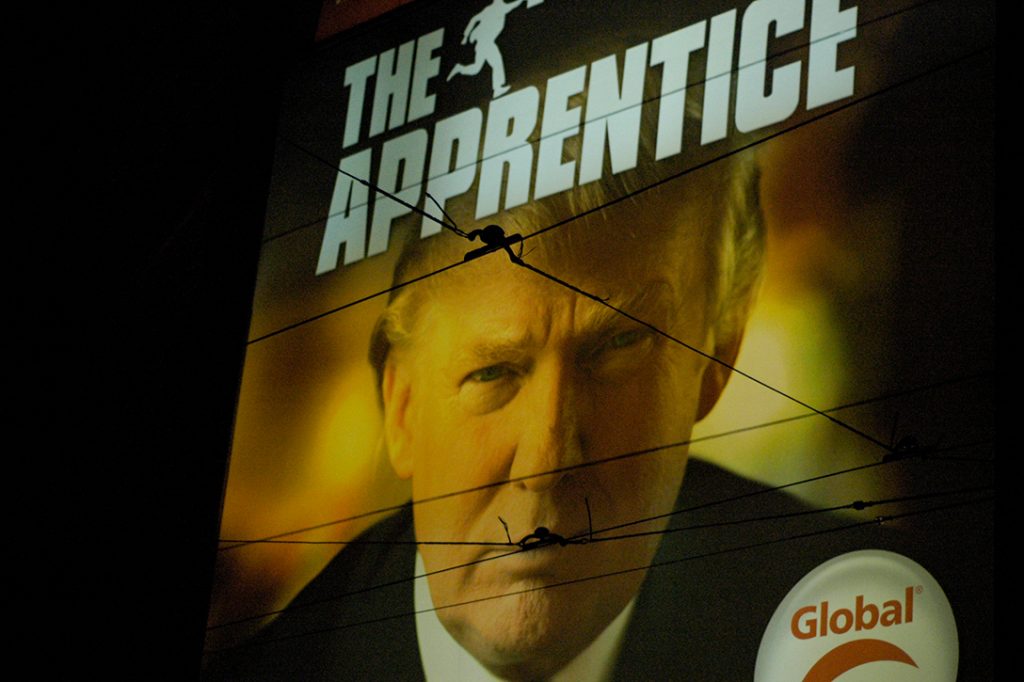
Photo credit: Sam Chua / Flickr (CC BY-NC-ND 2.0)
Thinking about Donald Trump, his obsessions with judging women and his dystopian descriptions of our country, I recalled the Gary Shteyngart novel I had read some years before, Super Sad True Love Story, which is set in the indeterminate future, a time when America is deporting immigrants with weak credit (has that started yet?), and has invaded Venezuela with such disastrous results that street corners bristle with National Guard checkpoints. In Shteyngart’s novel cell phones have become both more sophisticated and more sinister. Called äppäräts, they now include a “rate me” function that can tell you about everyone else in the room — recent income figures, testosterone levels, virtually anything you want to know. The protagonist of Super Sad Love Story, who still reads books and appears to his co-workers to be of “a different, earlier version of our species,” is criticized because he does not know how to rate people fast enough.
The feature Trump would like most about Shteyngart’s äppärät is this: if you hold one near your heart and aim it at a woman across the room, it will instantly read her “Fuckability” quotient. Should you be interested, you can also capture her personality rating.
Back in the day, no one could possibly have conceived that Billionaire Trump would one day run for office as a populist, the voice of “forgotten” citizens, people he would likely call “losers” in an off-election year. It was equally difficult to imagine that the three-times-married business man with the wandering eye, wayward hands and foul language would become the flag bearer for the country’s pro-life “moral majority,” to say nothing of self-righteous evangelicals. With his Dickensian business ethics and his Roaring Twenties ostentation, Trump seems more like an updated version of the tycoon Father had pronounced dead shortly after World War II. Take away the Nineteenth Century props — the cigar, the brandy, the homburg and the spittoon — add a few private planes and a Twitter account, and Voila! You have the epitome of the modern Robber Baron.
Perhaps what will matter most as his presidency moves forward is Trump’s stunning proclivity for lying. Tony Schwartz, my colleague at New Times, who wrote Trump’s “autobiography” Art of the Deal, told Jane Mayer of The New Yorker, “Lying is second nature to him. More than anyone else I have ever met, Trump has the ability to convince himself that whatever he is saying at any given moment is true, or sort of true, or at least ought to be true.”
Trump broadcasts toxic fictions and false narratives much as Typhoid Mary spread pestilence. It should have been a disqualifying characteristic for a candidate; as the leitmotif of a President it is beyond frightening. In his third week Trump made the astonishing claim that there were terrorist acts all across Europe that the media was refusing to report! The White House released a list of terrorists acts, most of which had been covered ad nauseam. (The list included no white racist terror attacks within our own country.) The claim furthered two of Trump’s long-term objectives: scare the nation and discredit the media.
If President Trump gets his way…. Trump will be turning the country over to fossil-fuel polluters (read Koch brothers), open-carry gun advocates, private school entrepreneurs, anti-abortion protestors, Wall Street predators and plutocrats who resemble his cabinet.
The model seems to be: Trump will be the Liar-in-Chief, originating whatever fabulations might be convenient for the moment, often on Twitter, while those surrounding Trump will nod and beam and defend these falsehoods with their last breath. In our youth, my brother Chris and I went to many Ringling Brothers circuses, watching as the clowns, with their painted faces, bulbous noses, floppy shoes and oversized dustbins, followed behind the elephants to clean up their droppings, trying to make the chore seem normal if not even humorous. Now, one watches Trump’s inner circle perform precisely the same function for the President as he puts before the public one stinking elephantine whopper after another.
Trump, who apparently does not read books, has asked his staff and cabinet to give him nothing longer to read than a single page. Richard Nixon was many things, but he was both interested in and knowledgeable about social policy, insisting that his staff brief him equally and fully on both sides of every issue that came before him. What information Trump does get seems to come from one direction only: conspiracy theorists, and discredited right-wing news sources and his own Twitter feed.
Now that Trump has attained the bully pulpit there is no telling how much more damage he will do to the nation’s shared sense of truth, purpose and common narrative, with his extreme anti-American rhetoric delivered in the guise of patriotism.
In his inaugural address, Trump boasted that he was giving the country back to the people. He must have muttered “not” under his breath, because this will surely turn out to be the foundational lie of his presidency. Most American citizens are concerned about climate change and approve of environmental protection; seven out of ten Americans support the right to abortion in most cases and believe in family planning; the “people” support the country’s education system and profess diminished interest in vouchers, charter schools and other private sector alternatives; by a clear majority, the “people” want stronger financial regulations on banks and more rather than less punishment for the predators of Wall Street. That very sentiment was the source of Vermont Senator Bernie Sanders surprising popularity during the primaries. The “people” also want stricter gun controls.
If President Trump gets his way, the will of the majority is going to be overruled on every one of these issues. Instead, Trump will be turning the country over to fossil-fuel polluters (read Koch brothers), open-carry gun advocates, private school entrepreneurs, anti-abortion protestors, Wall Street predators and plutocrats who resemble his cabinet. A week after his election Trump and his family stole away to Manhattan’s “21” Club, where the President-elect announced to the restaurant’s surprised customers, “We’ll get your taxes down. Don’t worry about it.”
“What we are witnessing now is the birth of a new political order, and the more frantic a handful of media elites become, the more powerful that new political order becomes itself.” – Steve Bannon
The German writer Goethe once observed, “Nothing is as frightening as ignorance in action.” Once President Trump was ensconced in the White House, he set out to prove Goethe’s maxim. Going for “shock and awe,” he produced a bunch of provocative Executive Actions, with much sound and fury. They were about as well-thought through as was George W. Bush’s “shock and awe” invasion of Iraq. When Obama had issued Executive Actions, Republicans invariably called him a “tyrant” who was operating outside the Constitution. These same Republicans now applauded not just the “overreach” but the hirsute display of mating plumage. In photo after photo one could see him surrounded by a cabal of clapping white males. It reminded me of President George W. Bush, swaggering about on the deck of the U.S. Abraham Lincoln with his flight helmet under his arm, declaring “Mission Accomplished” in Iraq just as the real fighting was getting underway.
Unlike Obama’s carefully worded orders, Trump’s had been rushed to the point that some were all but incomprehensible. But never mind. Each order was beautifully presented, with the new President working over his signature with the precision of a jeweler looking through his loop, then holding up the finished product for all to admire. It seems clear that Trump is almost as in love with his penmanship as he is with the man holding the pen.
As to the negative reaction and large protests around the country to Trump’s “shock and awe,” the ever-smiling Kellyanne Conway tweeted, “get used to it.” Steve Bannon went further. He called The New York Times to announce that the media was the enemy and the Times should “shut up.” Then he wrote the following email to the Washington Post: “What we are witnessing now is the birth of a new political order, and the more frantic a handful of media elites become, the more powerful that new political order becomes itself.” That certainly seemed threatening. Not to mention that a new political order sounds uncomfortably close to “new world order,” the fundamentalist Christian belief in the end times and the imminent arrival of the AntiChrist.
…finally, the whole dispute with the new host of the Apprentice might have been staged, like the fake wrestling matches Trump so admires, designed to lift flagging ratings.
In those first heady days, was anyone having buyer’s remorse? Maureen Dowd, the Pulitzer-Prize winning columnist for The New York Times, had played footsie with Trump through much of election cycle, keeping an open mind almost to the end. They were friends, she explained. They could talk to each other. Her neutral position was driven in part by her oft-expressed loathing for both Bill and Hillary Clinton, but also by what seemed a genuine fondness for Trump’s Bad-Boy persona. But after his very first week in the White House she apparently experienced some sort of epiphany. “Teetotaler Donald Trump,” she wrote, “already seems drunk on power.”
……
Day 14, February 2, 2017. President Trump is presiding over the annual National Prayer Breakfast when he launches into a stunningly inappropriate disquisition on his television show, The Apprentice, and its deformed spawn, Celebrity Apprentice. He clearly is still smarting over the painful decision to give up hosting the show, which had been both showcase and “blanky” for the last 14 years. After bragging about the “tremendous success” the show had enjoyed, President Trump laced into the decision to replace him with “a big, big movie star, Arnold Schwarzenegger.” He spread his arms very wide as he said this.
“We know how that turned out,” the President continued, with considerable rancor in his voice. “The ratings went down the tubes.” This was the second time in a month that Trump had trashed the former Republican governor of California. Mark Burnett, the originator and producer of The Apprentice, had introduced Trump — and Barack Obama the year before. Trump continued, still talking about his show, “It’s been a total disaster and Mark will never, ever bet against Trump again.” Ouch! What was that about? At best this all seemed inside baseball. Then the President of the United States did something more even remarkable. He asked his devout audience to pray for Schwarzenegger and his TV ratings. Unsure how to respond, the audience laughed nervously.
Was this simply more “gaslighting” of America? Bewildered pundits threw out various theories. Being the vindictive person he is, Trump might have been settling scores with Schwarzenegger for not backing his presidential bid; at the same time Trump seemed to be exacting revenge on Mark Burnett himself, who had also been vocal in opposition; or, perhaps it was simply a diversion, with Trump tossing the dobermans in the press corps fresh meat to keep them from further tearing into his controversial ban on travel from seven Muslim-majority countries; finally, the whole dispute with the new host of the Apprentice might have been staged, like the fake wrestling matches Trump so admires, designed to lift flagging ratings. Trump, after all, remained a scheming businessman who was still the TV show’s executive producer. Were any of these options appealing? Perhaps we should all pray for our country over breakfast, every day, for the next four years. If he lasts that long.
As Trump himself might have tweeted: What were the voters thinking? So sad.
Related front page panorama photo credit: The White House and Jonathan Z. Larsen
